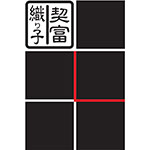For over three thousand years, the I Ching has been China’s most important book of divination. Embraced by the West during the last fifty years, it is known as the Book of Changes and is consulted as a source of ancient wisdom. The literal meaning of Ching is Tao or Truth. It is held that the Truth of Heaven is also the Truth of humanity; the I Ching is the earliest book approaching this unity of Heaven and humanity.
There are 64 hexagrams or gua, each represented by six parallel lines called yao in Chinese; these are divided into two trigrams—yin yao (broken) and yang yao (continuous). The first 30 gua, the Upper Canon, represent the yang aspect of natural phenomena: the masculine, the firm, strong, odd numbers, active things, the sunny side of the mountain. The remaining 34 hexagrams, known as the Lower Canon symbolize yin: the feminine, yielding, weak, even numbers, passivity, the mountain’s shaded side.
I Ching Interpretation combine the Japanese art of Sakizome with warp painting and double weave—two pieces of fabric woven simultaneously. Using a weaving pickup method, layers of threads are exchanged, the ideogram panel and hexagram below warp painted onto only one of the layers.
There are 64 hexagrams, 64 ideographs to the I Ching. All of the images are available by special order individually.
gua—Chinese • English Translations
upper trigram—Chinese • English Translations
lower trigram—Chinese • English Translations
